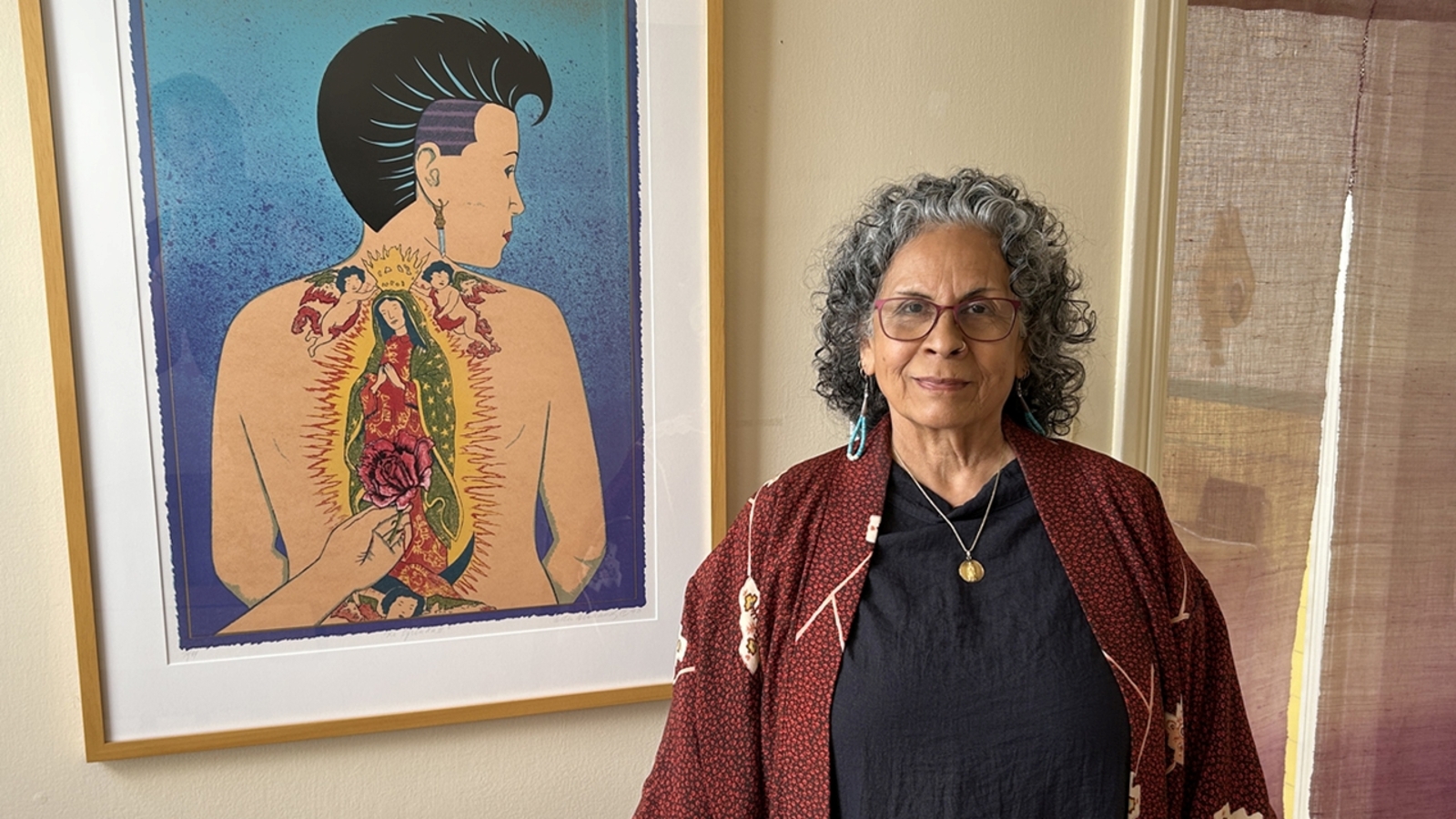
"Her print 'Sun Mad' caused a stir in 1982 by reimagining a Sun-Maid raisins box as a warning against the use of pesticides in agriculture. The iconic print is on exhibit at the New York Museum of Modern Art and has been shown at the Smithsonian American Art Museum, but has never been exhibited in the San Joaquin Valley, where she grew up."
""It's always been censored but that doesn't stop me," says Ester Hernández. "If I have something to say, I don't worry about how it'll be taken. I have to create them, if nothing else, to process them through my heart and soul.""
"In 1976, she created a print of the Statue of Liberty for America's bicentennial when she felt there was no attention being paid to the native people of the continent. The print shows a woman sculpting Mayan symbols out of the monument. She has since created a new take on Lady Liberty. "The Liberty Statue has a tattoo of the Virgin of Guadalupe with hoop earrings, with her arm lifted up, with the spray can spraying resist. That's where we are right now.""
Ester Hernández created the print 'Sun Mad' in 1982 by reimagining a Sun-Maid raisins box as a warning about pesticide use. The print became iconic, entered major museum collections including MoMA and the Smithsonian, and has not been exhibited in the San Joaquin Valley where she grew up. Hernández was born in Dinuba to farmworker parents who picked grapes and later boiled their water because of pesticide-contaminated groundwater. Her activism predates 'Sun Mad,' including a UC Berkeley illustration on mercury poisoning and a 1976 Statue of Liberty print focusing on Native peoples. Her Mexican and Yaqui heritage informs recurring imagery of the Virgin of Guadalupe.
Read at ABC7 San Francisco
Unable to calculate read time
Collection
[
|
...
]